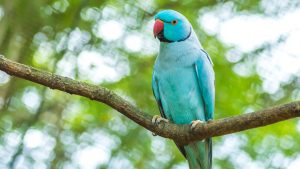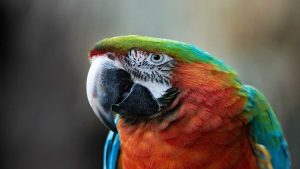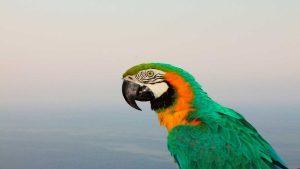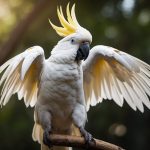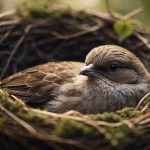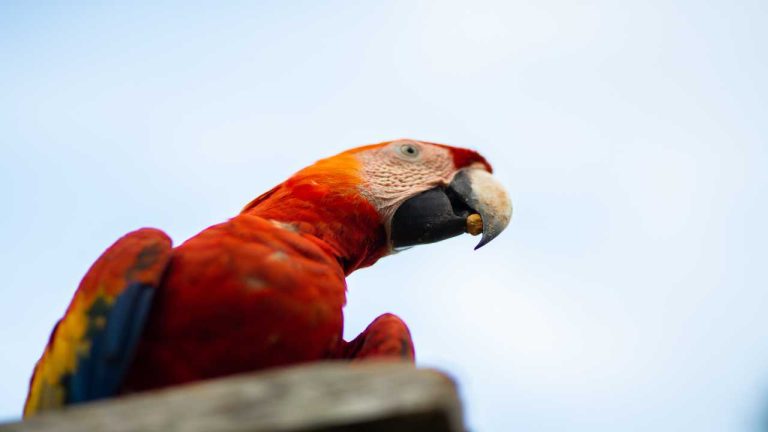What Do Parrots See? Understanding the Visual Perception of These Colourful Birds
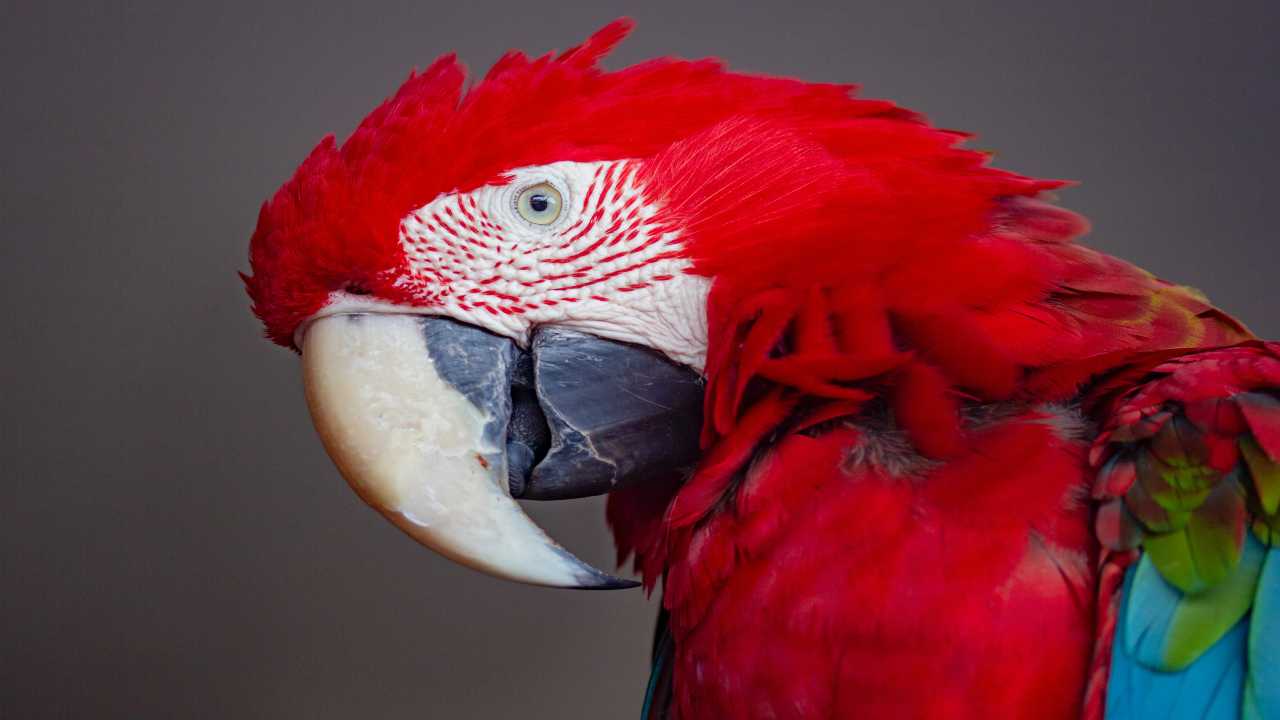
Parrots are fascinating creatures with a unique ability to see the world differently than humans. Their keen vision allows them to see in colour, identify shapes, and understand the complexities of their environment.
In this article, we will explore the mysteries of parrot vision and how it differs from human vision.
Understanding parrot vision is crucial to understanding their behaviour and how they interact with their environment. Parrots have eyes located on the sides of their head, giving them a wide range of view and nearly 360-degree vision.
This allows them to detect predators and react quickly. They can also see colours in both the visible and ultraviolet spectrum, which helps them find food, recognize mates, and identify other members of their species.
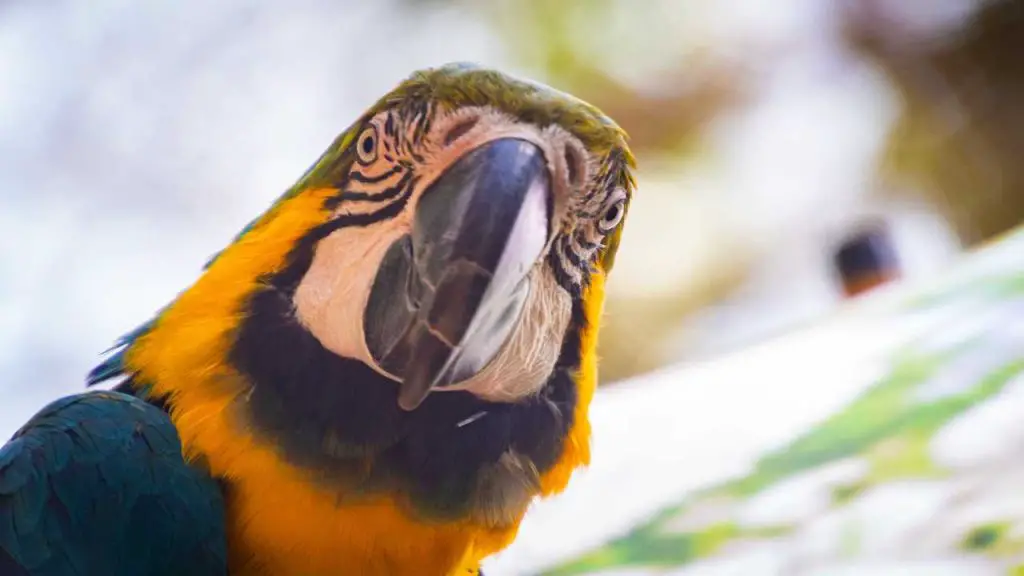
Key Takeaways
- Parrots have a unique ability to see in colour and detect ultraviolet light, which helps them find food, recognize mates, and identify other members of their species.
- Parrot vision differs from human vision due to its wide range of view and nearly 360-degree vision.
- Understanding parrot vision is crucial to understanding their behaviour and how they interact with their environment.
Table of Contents
Understanding Parrot Vision
Parrots have a unique and fascinating way of seeing the world. Their keen vision allows them to see in colour, identify shapes, and understand the complexities of their environment. In this section, we will explore the different aspects of parrot vision.
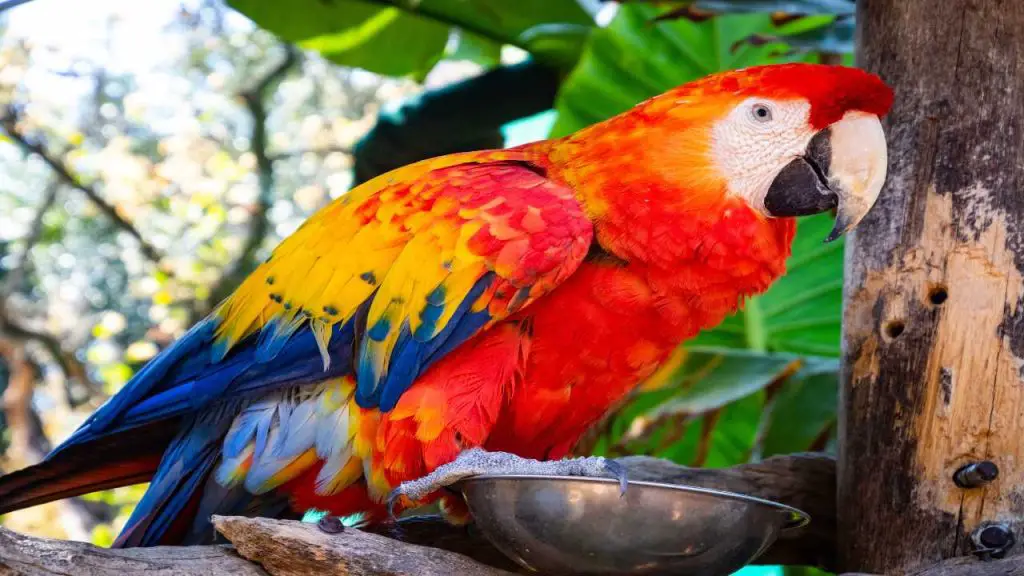
Retina, Rods, and Cones
Like humans, parrots have a retina at the back of their eye that senses light. The retina contains two types of photoreceptor cells: rods and cones. Rods are responsible for detecting light and dark, while cones are responsible for detecting colour. Parrots have a higher density of cones than humans, which means they can see more colours.
Colour Receptors
Parrots have four types of colour receptors, compared to humans who have three. This means that parrots can see a wider range of colours, including ultraviolet light. They use this ability to communicate with each other, locate food, and navigate their environment.
Binocular and Monocular Vision
Parrots have both binocular and monocular vision. Binocular vision allows them to see objects with both eyes, which helps with depth perception and judging distance. Monocular vision allows them to see objects with one eye, which helps with peripheral vision.
Peripheral Vision and Depth Perception
Parrots’ peripheral vision and depth perception are superior to humans, meaning they can track movement more clearly. They can also see fast-moving light. However, they can’t see infrared light and don’t have night vision, meaning that a low-watt light bulb will appear to blink.
In conclusion, parrots have a unique and fascinating way of seeing the world. Their keen vision allows them to see in colour, identify shapes, and understand the complexities of their environment. By understanding parrot vision, we can learn more about these intelligent and fascinating birds.
The Science Behind Parrot Vision
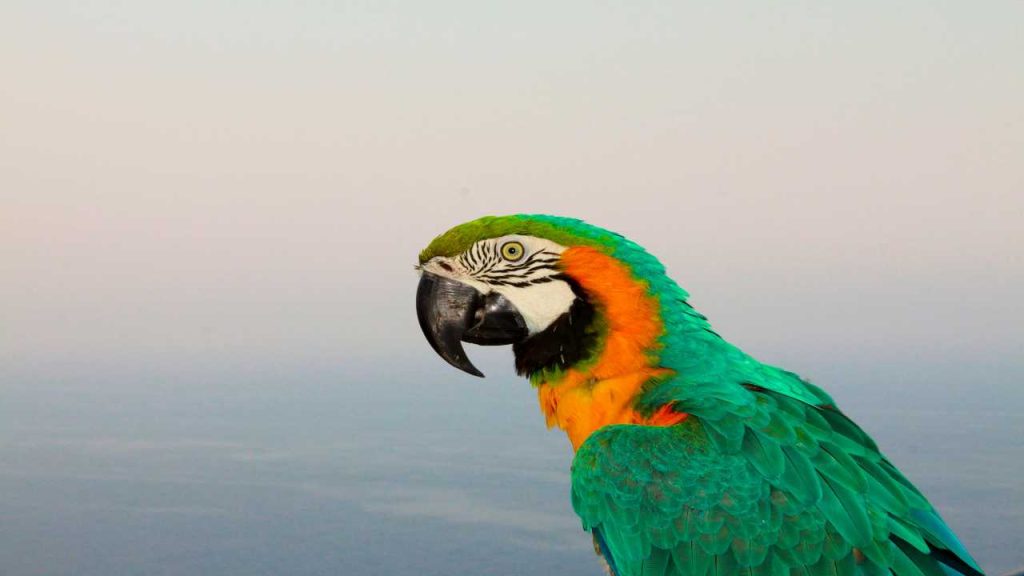
Parrots have a unique ability to see the world differently. Their keen vision allows them to see in colour, identify shapes, and understand the complexities of their environment. In this section, we will explore the fascinating science behind parrot vision.
Parrots can see ultraviolet light and fast-moving light, which is not visible to the human eye. However, they cannot see infrared light and do not have night vision, meaning that a low-watt light bulb will appear to blink. The positioning of the eyes on each side of the head is an evolutionary trait observed in most prey animals, which gives them a wide range of view and nearly 360-degree vision. This allows them to detect predators and react quickly.
The eye of a parrot is a very sophisticated organ and has many different functions. One function of the parrot’s eye is to see in darkness. The eye has a light-sensitive receptor called a rod and a dark-sensitive receptor called a cone. The cone cells are responsible for colour vision and are densely packed in the fovea, a small area in the centre of the retina. The fovea allows the parrot to see fine details, such as the texture of feathers or the shape of a seed.
Parrots have four types of cone cells, which enable them to see a wider range of colours than humans can. They can see ultraviolet, which is beyond the violet end of the visible light spectrum. This ability is useful for finding food, recognizing mates, and identifying other members of their species. Parrots also have a high degree of contrast sensitivity, which allows them to distinguish between objects that are visually similar.
In conclusion, the science behind parrot vision is fascinating. Their ability to see ultraviolet light, contrast, and colouration is unique and gives them an advantage in their environment. The positioning of their eyes on each side of their head also gives them nearly 360-degree vision, which helps them detect predators and react quickly.
Parrots and Ultraviolet Light

Parrots have a unique ability to see ultraviolet (UV) light, which is invisible to the human eye. This means that they can see colours that we cannot see, and their world is much more vibrant and colourful than ours.
The sensitivity of parrots to UV light is due to the presence of four cone types in their eyes, which allow them to see a wider range of colours. In addition to the three primary colours that humans see (red, green, and blue), parrots can also see ultraviolet light, which is at the shorter end of the spectrum.
This ability to see UV light is particularly useful for parrots in the wild, as it helps them to find food, identify potential mates, and navigate their environment. For example, some parrot species have reflective patches on their feathers that are only visible in UV light, which helps them to attract a mate.
Overall, the ability of parrots to see ultraviolet light is a fascinating aspect of their vision. It adds an extra dimension to their world and allows them to perceive colours and patterns that are invisible to us.
Parrot Foraging and Vision
Parrots are known for their exceptional vision, which helps them navigate their environment and find food. One of the most important aspects of parrot vision is their ability to distinguish colours and shapes, which helps them identify different types of fruits and berries.
Foraging is a natural behaviour for parrots, and it is important to provide them with opportunities to engage in this activity. When foraging, parrots use their keen eyesight to locate food, as well as their sense of touch and taste to determine whether a particular item is edible.
Parrots are particularly adept at finding ripe fruits and berries, which are often brightly coloured and easy to spot against the green foliage of their natural habitat. They can also use visual cues, such as the shape and size of a particular fruit or berry, to determine whether it is worth investigating further.
In captivity, it is important to provide parrots with a variety of foraging opportunities, such as hiding food in puzzle toys or scattering it around their enclosure. This not only helps to keep them mentally stimulated but also encourages them to engage in natural behaviours like foraging.
In conclusion, parrots have exceptional vision that allows them to find food and navigate their environment. Foraging is a natural behaviour for parrots, and it is important to provide them with opportunities to engage in this activity. By doing so, we can help to ensure that our feathered friends remain healthy and happy.
Parrot Predators and Vision
Parrots are intelligent birds with excellent vision that allows them to see their environment clearly. However, they are not immune to predators, and they must remain vigilant to avoid becoming prey.
One of the biggest threats to parrots is raptors. These birds of prey, such as hawks and eagles, have keen eyesight and can spot a parrot from a great distance. Parrots have evolved to detect these predators and can often spot them before they are spotted.
Owls are another threat to parrots, especially at night. Owls have excellent vision and can see in low-light conditions. Parrots have adapted to this threat by sleeping in groups and remaining quiet at night to avoid drawing attention to themselves.
Camouflage is another technique used by predators to catch their prey. Some predators, such as snakes and lizards, can blend in with their surroundings and ambush their prey. Parrots have evolved to detect these predators by using their excellent colour vision to spot any anomalies in their environment.
In conclusion, parrots have excellent vision, but they are not invincible. They must remain vigilant and aware of their surroundings to avoid becoming prey to predators. By using their keen sense of vision and adapting to the threats posed by predators, parrots can continue to thrive in their natural habitats.
Night Vision in Parrots
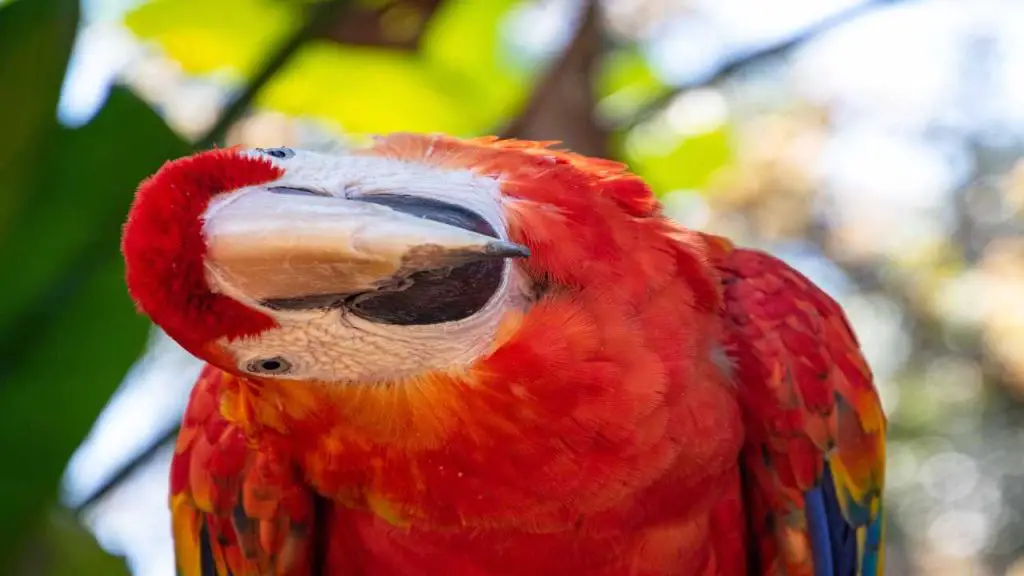
Parrots are known for their keen eyesight, which is essential for their survival in the wild. However, when it comes to night vision, parrots are not as adept as some other animals.
While some birds, such as owls, have highly developed night vision, parrots do not possess this ability. They are diurnal animals, which means they are active during the day and sleep at night.
That being said, parrots do have some visual adaptations that help them see in low-light conditions. For example, they have a high concentration of rod cells in their eyes, which are specialized cells that are responsible for detecting light. This allows them to see in dimly lit environments, but their vision is still not as sharp as it is during the day.
It’s important to note that not all parrot species have the same visual abilities, and some may be better adapted to low-light conditions than others. However, in general, parrots do not have true night vision and rely on other senses, such as hearing, to navigate in the dark.
In conclusion, while parrots have incredible eyesight during the day, they are not equipped with night vision. They can see in low light conditions, but their vision is not as sharp as it is during the day. It’s important to provide your pet parrot with a comfortable and safe sleeping environment at night to ensure their well-being.
Parrot Species and Vision Differences
Parrots are known for their keen sense of vision. However, different species of parrots have varying visual abilities. Here, we’ll explore the vision differences among some of the most popular parrot species.
Macaws
Macaws are known for their vibrant plumage, and their vision is just as impressive. These birds have excellent colour vision and can see in the ultraviolet range. They also have a high degree of visual acuity, meaning they can see fine details at a distance. However, macaws have poor night vision and rely on their sense of hearing to navigate in low-light conditions.
African Grey Parrot
African Grey Parrots are one of the most intelligent parrot species, and their vision is no exception. They have excellent colour vision and can see in the ultraviolet range. They also have a high degree of visual acuity, which allows them to see fine details at a distance. African Grey Parrots also have a unique ability to see polarized light, which helps them navigate in their natural habitat.
Lorikeets
Lorikeets are known for their bright, colourful plumage, and their vision is just as vibrant. These birds have excellent colour vision and can see in the ultraviolet range. They also have a high degree of visual acuity, which allows them to see fine details at a distance. However, lorikeets have poor night vision and rely on their sense of hearing to navigate in low-light conditions.
Cockatoos
Cockatoos are known for their playful personalities, and their vision is just as lively. These birds have excellent colour vision and can see in the ultraviolet range. They also have a high degree of visual acuity, which allows them to see fine details at a distance. However, cockatoos have poor night vision and rely on their sense of hearing to navigate in low-light conditions.
Cockatiels
Cockatiels are popular pets due to their friendly personalities and easy-going nature. These birds have excellent colour vision and can see in the ultraviolet range. They also have a high degree of visual acuity, which allows them to see fine details at a distance. However, cockatiels have poor night vision and rely on their sense of hearing to navigate in low-light conditions.
Parakeets
Parakeets are another popular pet parrot species. These birds have excellent colour vision and can see in the ultraviolet range. They also have a high degree of visual acuity, which allows them to see fine details at a distance. However, parakeets have poor night vision and rely on their sense of hearing to navigate in low-light conditions.
Blue Tit
Blue Tits are small, colourful birds that are native to Europe and Asia. These birds have excellent colour vision and can see in the ultraviolet range. They also have a high degree of visual acuity, which allows them to see fine details at a distance. Blue Tits also have a unique ability to see polarized light, which helps them navigate in their natural habitat.
In conclusion, different species of parrots have varying visual abilities, but all have excellent colour vision and a high degree of visual acuity. However, most parrots have poor night vision and rely on their sense of hearing to navigate in low-light conditions.
Parrot Vision and Human Comparison
Parrots have exceptional vision compared to humans. While humans are trichromats and can only see three primary colours (blue, green, and red), parrots are tetrachromats and can see four primary colours (ultraviolet, blue, green, and red). This means that parrots can see a wider range of colours than humans.
In addition to having better colour vision, parrots also have superior depth perception and peripheral vision. They can track movement more clearly and see fast-moving objects better than humans. Parrots can also see ultraviolet light, which is invisible to humans. However, they cannot see infrared light and do not have night vision.
The human retina has two types of photoreceptor cells – rods and cones. Rods are responsible for vision in low light conditions, while cones are responsible for colour vision. Humans have three types of cones, each sensitive to a different range of wavelengths of light. In contrast, parrots have four types of cones, which allows them to see a wider range of colours.
Interestingly, parrots have a fovea, which is a small, central area of the retina responsible for sharp, detailed vision. The fovea in parrots is much larger than in humans, which gives them better visual acuity.
Overall, parrots have superior vision compared to humans. They can see a wider range of colours, have better depth perception and peripheral vision, and can detect fast-moving objects more accurately.
Parrot Vision in Literature and Technology
Parrots have fascinated humans for centuries, and their vision has been a topic of interest in both literature and technology. In literature, parrots are often portrayed as intelligent and perceptive creatures with keen senses, including their vision. In technology, parrot vision has been studied and used to develop new imaging techniques and devices.
In literature, parrots have been featured in various works, including poetry, novels, and children’s books. Their bright plumage and unique vocal abilities have made them popular characters in stories. Some authors have even used parrot vision as a metaphor for human perception and understanding of the world.
In technology, parrot vision has been studied to better understand how birds see and process visual information. Researchers have used parrot vision to develop imaging techniques that can be used in medical and scientific fields. For example, parrot vision has been used to develop new imaging techniques for detecting cancerous cells in the human body.
Parrot vision has also been used to develop new technologies for studying the environment. Scientists have used parrot vision to develop new imaging devices that can be used to study the behaviour of animals in their natural habitats. These devices can be used to monitor the behaviour of endangered species and to track the movements of animals in the wild.
Overall, parrot vision has been a topic of interest in both literature and technology. The unique abilities of these birds have inspired authors and scientists alike, and their vision has been used to develop new technologies and devices.
Frequently Asked Questions
How far can parrots see?
Parrots have very keen eyesight and can see objects from far away, especially when they are flying. They have a visual acuity that is about two to three times better than that of humans. This means that they can see things that are farther away and in greater detail than we can.
Can parrots see colour?
Yes, parrots can see in colour. They have very good colour vision, and they can see a wider range of colours than humans can. This is because they have four types of colour receptors in their eyes, while humans only have three.
How do parrots talk?
Parrots can mimic human speech and other sounds because they have a unique vocal system that allows them to control the sounds they make. They use their syrinx, which is located at the base of their trachea, to produce sounds. They can also learn to mimic sounds they hear in their environment.
Do parrots have a good memory?
Yes, parrots have very good memories. They can remember things for a long time, especially if it is something that is important to them. They can remember words, phrases, and even songs that they have learned.
Can conures see in the dark?
Parrots, including conures, cannot see in complete darkness. However, they do have good night vision and can see in low-light conditions. This is because they have a high concentration of rod cells in their eyes, which are specialized for seeing in dim light.
Do parrots recognize humans?
Yes, parrots can recognize individual humans. They have a good memory for faces and can distinguish between different people. They can also learn to associate certain people with positive or negative experiences.


